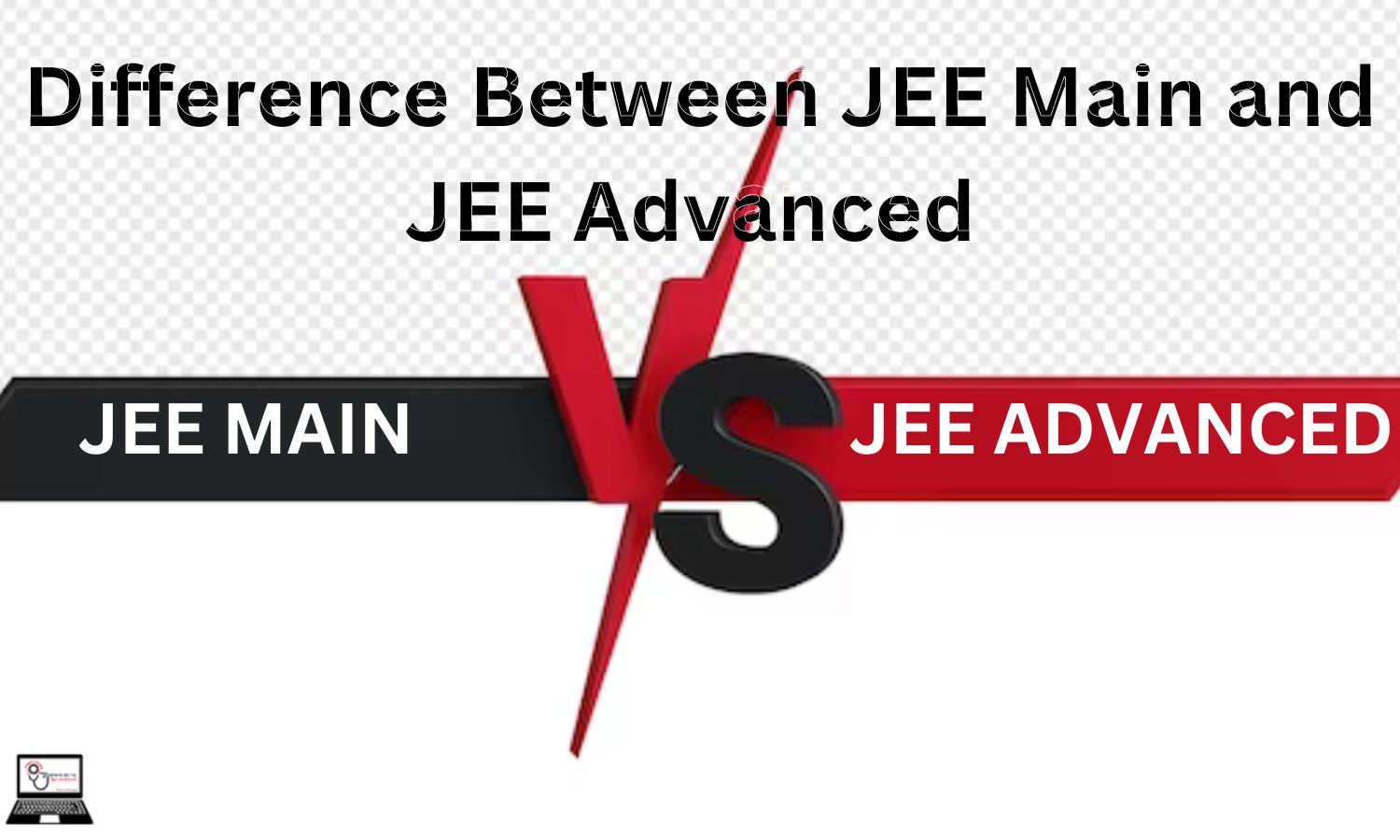In this article, we are going to explain the difference between JEE main and JEE advanced syllabus. Both JEE Main and JEE Advanced are national-level entrance exams that serve as gateways to prestigious engineering institutions in India, including IITs, NITs, IIITs, GFTIs, and other state government colleges. While both exams share many similarities, there are also several key distinctions that set them apart. For example, a candidate must pass the Mains exam to appear for the Advanced exam. You will learn not just about JEE main vs JEE advanced syllabus but also JEE main vs JEE advanced difficulty. So, make sure you read this article till the last.
About JEE Main
The JEE main is an exam for candidates who are in their 12th standard. They are eligible to take the test twice a year. This is the qualifying paper for the JEE Advanced exam. The first session usually takes place before the 12th boards exam (i.e., in the month of January) and another after the board exam (i.e., in the month of April). The NTA releases the exact dates a few months in advance, and exam registration opens one or two months before that. The JEE main exam tests the candidate on important skills like conceptual thinking, memory, understanding, and knowledge and application.
In recent years, especially post-Covid, the number of applicants appearing for the JEE Main exam has sprung up. There is a 22.22% increase in the number of candidates appearing in 2021. This number is assumed to increase more over the coming years.
Each year, the JEE main exam is held twice. You can take the exam a total of 6 times over a period of 3 years.
Question Pattern of JEE Main
| Duration | 3 hours |
| Sections | Physics, Chemistry and Mathematics |
| Types of Question | – Multiple Choice Questions (MCQs)
– Questions with numerical values as answers |
| Marks Distribution | The total is 75 questions, and each subject has a total of 25 questions. – 20 MCQs+10 questions with answers as a numerical value. – Out of 10 questions, 5 questions are compulsory. |
| Marking Scheme | The correct answer gets 4 marks. The wrong answer gets 1 negative mark. |
The JEE main exam is comparatively easy and more aligned with the NCERT syllabus.
About JEE Advanced
The JEE advanced is for candidates who have taken the JEE main exam and their rank is in the top 2,50,000. The JEE advanced exam is mainly for candidates who are aiming for IITs, IISc BLR, IISER, and other prestigious engineering colleges. Apart from getting admission in top colleges in India, getting top rank in the Advanced exam can also translate into better job prospects. Unlike the Mains exam, the Advanced exam is only once a year (usually in the month of June).
Tier-one IIT colleges in India conduct JEE Advanced. Consisting of two papers, this exam tests the candidates’ accuracy, speed, ability to handle pressure, and decision-making skills. Even though the number of questions is less in comparison to the time given deal with each question than it is given in the JEE Main exam. The difficulty level is much higher in JEE Advanced. In JEE Advanced, decision-making and pressure handling become really important as the questions are tricky and focus on testing the candidates’ problem-solving skills. The application of the concept is asked, and hence, the student has to think from more than one angle. Candidates who join the best IIT JEE coaching institute in Delhi find it much easier to solve questions in the JEE Advanced exam.
Question Pattern of JEE Advanced
| Duration | 3 hours + 3 hours |
| Number of Papers | 2 |
| Type of questions | MCQs, MSQs, and Questions with numerical values as answers. |
| Distribution of Question (This changes every year) |
Total 54 questions (Approx 18 questions from each subject) – MCQs have six single option – 6 one or more correct options – 6 numerical value answers |
| Marking Scheme | Single Correct Answer (MCQ) – Correct answer is 3 mark addition – Wrong answer is 1 mark deduction One or More Correct Options (MSQ) – 4 marks if the correct option is selected.– 3 marks all 4 options are correct but you chose only 3.– -2 on incorrect answer |
What Is The Difference Between JEE Main and Advanced?
When it comes to the difference between JEE Main and Advanced, there is a long list that comes in the picture. If you think of the two exams, the major difference now is that of the JEE main and JEE advanced syllabus. The differences have become wider after the change in the JEE mains syllabus 2024. Let us compare JEE main and JEE advanced.
Download new JEE Main syllabus here. Click on the link
| JEE Main Exam | JEE Advanced Exam |
|
|
|
2. You can only take this exam 2 times in 2 consecutive years. |
|
3. The seven zonals of IIT jointly organize the exam. Namely, IIT Kanpur, IIT Madras, IIT Delhi, IIT Bombay, IIT Guwahati, IIT Roorkee, and IIT Kharagpur. |
|
4. It is held once a year. This is usually held in the month of May. |
|
5. A candidate can appear for two consecutive years. |
|
6. It has two papers. |
|
7. JEE Advanced is for admission in IIT, IIST, RGIPT, IISc BLR, and IISER. |
|
8. There is an addition of topics song with the JEE Mains syllabus. |
|
9. JEE Advanced is difficult. |
|
10. You can only take the exam in English and Hindi. |
Which Exam Is Better IIT or JEE?
Both JEE main and JEE advanced are exams for engineering. However, there is a difference in the degree of difficulty. JEE Main is designed in alignment with the NCERT syllabus and is comparatively easier, whereas the Advanced is more challenging.
Both JEE main and JEE advanced are national-level entrance exams for engineering. If you want to get into colleges like NIT, IIIT, GFTIs, etc., you should focus on getting high ranks in JEE Mains. Since it is the qualifying exam for JEE Advanced, getting a rank within the top 2,50,000 can also get you qualified to sit for the the Advanced exam. Only by getting a good rank in the Advanced exam can you get into the first tier of IIT colleges.
Here is a list of Engineering branches in order that require from most scores in JEE to the least:
1 Computer Science and Engineering (CSE)
2 Electronics and Electrical Engineering (EEE)
3 Mechanical Engineering (ME)
4 Civil Engineering (CE)
5 Chemical Engineering (CHE)
6 Aerospace Engineering (AE)
7 Biotechnology (BT)
8 Metallurgical and Materials Engineering (MME)
9 Mining Engineering (MN)
10 Engineering Physics (EP)
Conclusion
Both JEE main and JEE advanced can be difficult if you have not prepared for the exam well. Remember, regardless of the of the goal, whether you want to aim for NIT or IIT, getting the top rank in the JEE main exam is vital. You can join the best IIT coaching in Delhi to get the best guidance for your exam.



